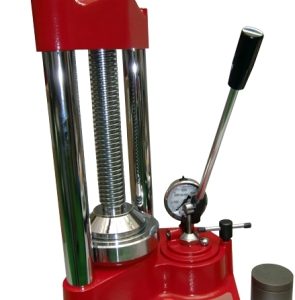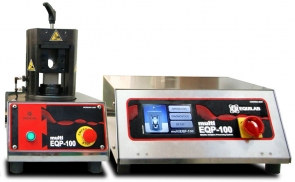Key Applications:
Glass, land, slag, coal, clinker, coke, metal oxides, ferro alloy, cement, ceramics, minerals, silicates, geological samples and mineralogical



- Obtain analytical grain size in seconds
- Easy to use
- 5 working programs
- Accepts a wide range of materials
- Quick change of milling jars
- Anti-vibration chamber
- Convenient display
- The best quality/price of the market
The Vibratory Disc Mill is crushing unit specially designed to obtain grain sizes from a wide range of samples, such as glass, earth, slag, metallic oxides, ferroalloys, cements, ceramic elements, amongst other. It can quickly crush a great variety of different materials, from semisoft materials to the hardest, fragile or fibrous. Its simplicity of use and sturdiness make of this it a practically maintenance free unit..
Controlled by a microprocessor, it has got five working programs, from where you can select several times and milling speeds. When the milling jar is put in place with the sample inside, and you close the door, simply select one of the programs and push start. The unit starts up immediately and, when the programmed time has elapsed, the mill will stop, allowing the door to open to take the milling jar.
The acoustic insulation lining the inside effectively lowers the sound level of the mill during the milling process, avoiding thus exposing the user to noise.
The fixing system for the milling jars, as well as the safety lock in the door preventing it from opening until the engine has completely stopped, make of this mill a highly safe unit.
Stable The frequency converter in this unit, apart from allowing adjusting the speed of the engine to the most adequate for each type of sample, lets you reach the working speed as well as pass to zero speed via an acceleration or deceleration ramp, this way avoiding that the unit vibrates in the starting and stopping process.
The crushing of the sample is made in the inside of the jar initially with the discs colliding into one another, and then with the friction between the discs and the walls of the jar. The milling times are really short.




